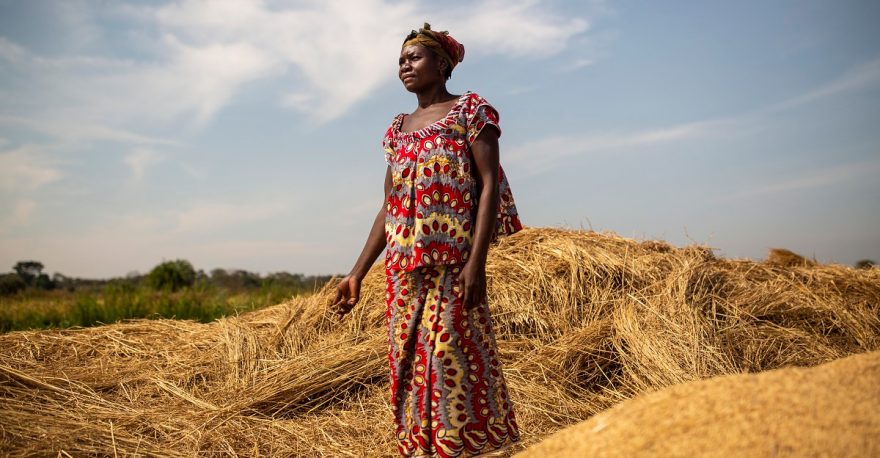Supporting girls and women in the climate crisis

What do drip irrigation, recycling and black soldier flies have in common? They are all part of the efforts promoted by Women's Bank to mitigate and adapt to climate change.
Women's Bank
- Enables girls’ access to education.
- Improves women’s skills.
- Empowers girls and women.
722 women participated in climate change training in 2021.
In Cambodia, we train women to cultivate climate-friendly crops and use water-saving irrigation methods.
In Kenya, women learn to make money with recycled materials and tackle environmental issues affecting the urban slums.
In Nepal, we are testing the production of black soldier fly larvae for animal feed. Every Women’s Bank project promotes practices that protect the climate and the environment.
In crises, innovative solutions are called for everywhere.
The climate crisis threatens the rights of girls and women
Women represent the majority of those living in extreme poverty, most of them in rural areas.
– People living in poverty don’t have the opportunity to adapt to change. They are also usually heavily dependent on natural resources, says Finn Church Aid’s climate expert Aly Cabrera.
Climate change is increasing the amount of work women and girls are expected to perform when chores such as carrying water and cooking take more time. Women already perform three times as much unpaid work as men.
That is time away from studying and paid work which tend to improve a person’s social status. Poverty also drives families to accept child marriages for their daughters.
But it is girls and women who are needed to resolve the crisis. They are the experts of their own circumstances, and we need their contribution to come up with sustainable solutions for the world’s problems.
How can we make the voices of girls and women heard?
Education is crucial as it opens up opportunities to change the direction of one’s life and, ultimately, that of society. However, girls continue to have less access to education than boys globally. In sub-Saharan Africa one in four young women cannot read.
Women’s Bank supports the most vulnerable girls with vocational education and training scholarships. In recent years, we have promoted women’s literacy education in the Central African Republic. However, women’s education plays a key role in every project we undertake.
This work is paying off
Thanks to our climate-friendly farming training, women have not only increased their crop volumes, but also diversified their families’ diets.
We have witnessed how the position of women in families and societies has improved, especially through work and skills.
Women who have gained an occupation have not only broken through the glass ceiling at work, but, as their self-confidence has grown, have also become involved in local politics, enabling them to address environmental issues and influence decision-making.
This change in the position of women will have a direct impact on the prospects of the next generation.
– Girls have new role models in their mothers who work in gainful employment and believe in their chances of success, says Ulla Sarasalmi, Finn Church Aid’s Senior Livelihoods Adviser.
Together, girls and women are changing the world.
By Eija Wallenius
Photo: Yabengue Carole is the leader of the Lakanza women’s group in the Bozoum region of the Central African Republic. Women in the region rely on agriculture for their livelihoods. Photo: Patrick Meinhardt
